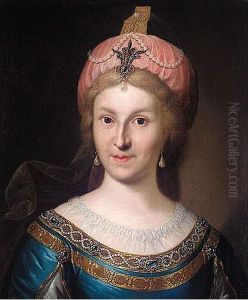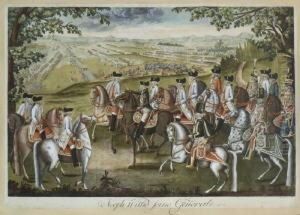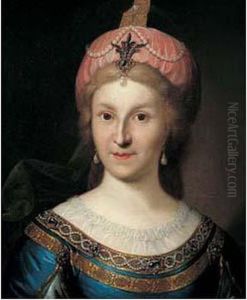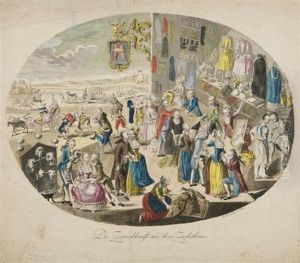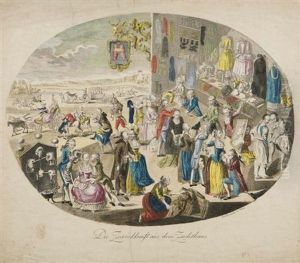Johann Hieronymus Loschenkohl Paintings
Johann Hieronymus Loschenkohl was an Austrian engraver and artist, born in 1753 in Krems an der Donau, a picturesque town in the heart of Austria. His early life was steeped in the cultural vibrancy of the Austrian Baroque period, an era that significantly influenced his artistic development. Loschenkohl was known for his mastery in engraving, a skill that he honed over the years, making significant contributions to the artistic landscape of his time.
Loschenkohl's work is characterized by its intricate detail and the precision of his engravings. He was particularly renowned for his portraits, which captured not only the physical likeness but also the essence of his subjects. His ability to depict textures, from the softness of fabric to the intricate patterns of lace, showcased his exceptional talent and attention to detail. Loschenkohl's engravings were not limited to portraits; he also produced landscapes, architectural views, and historical scenes, which were widely appreciated for their accuracy and aesthetic appeal.
Throughout his career, Johann Hieronymus Loschenkohl collaborated with many prominent artists and patrons of his time, contributing to various important projects. His works were sought after by the aristocracy and the burgeoning middle class, reflecting the cultural and social dynamics of late 18th and early 19th-century Austria. Loschenkohl's engravings served not only as artworks but also as important documents of contemporary events and personalities, making him a significant figure in the preservation of Austrian cultural heritage.
Despite his contributions to the art world, details about Loschenkohl's personal life remain relatively obscure, as is the case with many artists of the period. What is clear, however, is the impact of his work, which continued to be celebrated and studied long after his death in 1807. Johann Hieronymus Loschenkohl's legacy is that of a master engraver whose works provide a window into the aesthetic and cultural sensibilities of his time, earning him a place among the notable artists of the Austrian Baroque and Neoclassical periods.
